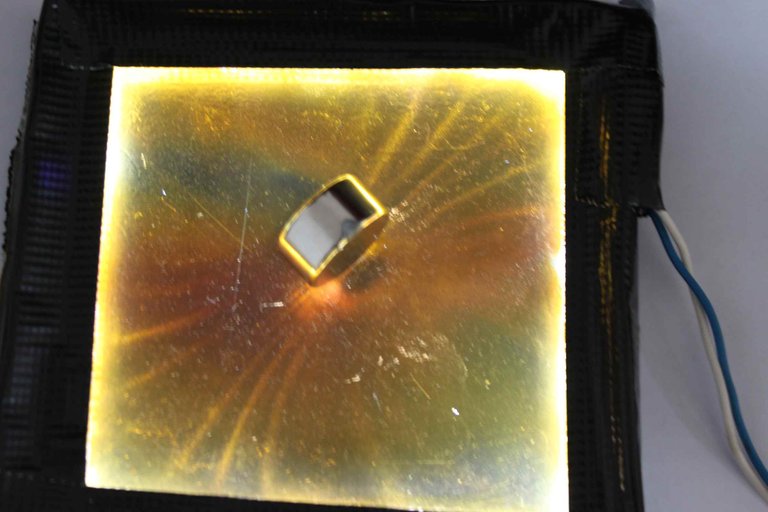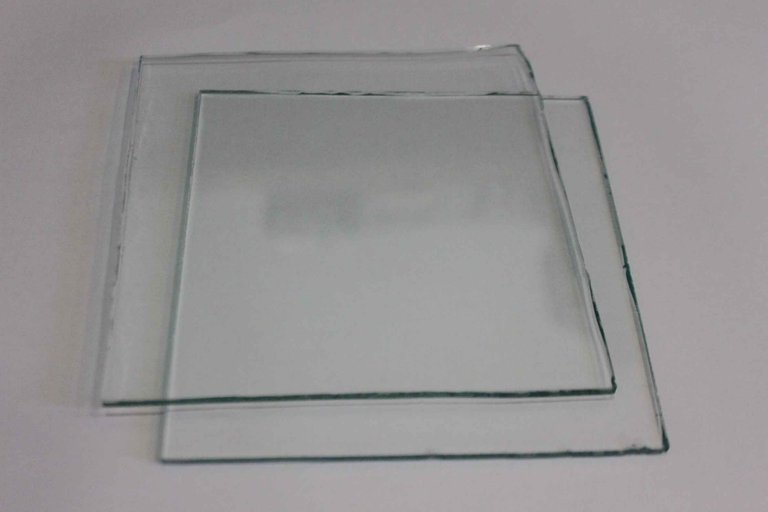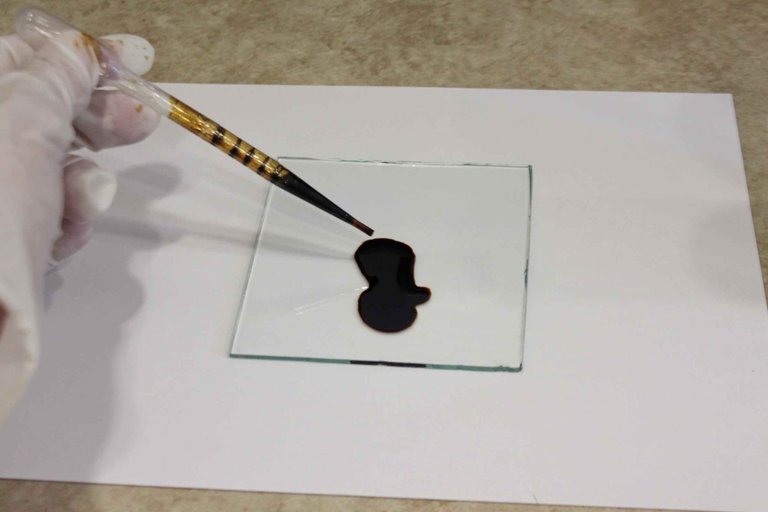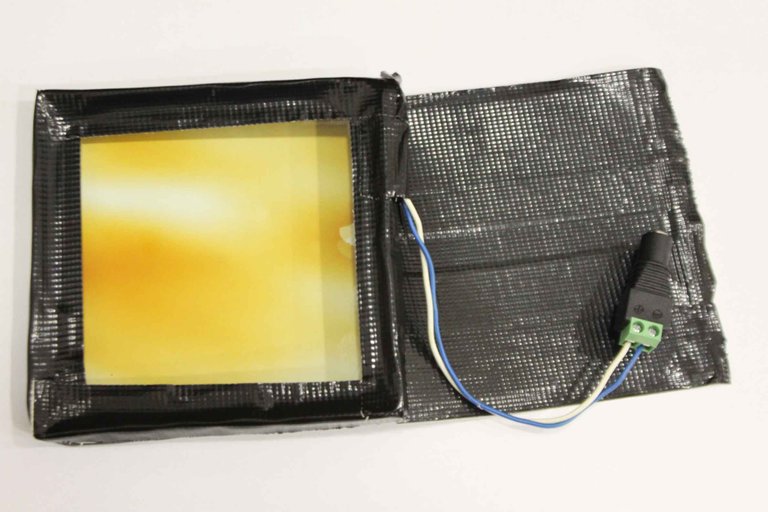
I'll start with a question as @mobbs has suggested it would increase interaction between members. This is a question to @lemouth and anyone who can answer. But of course, I don't expect only answers. You can comment on anything you find interesting :)

Disclaimer: I have not found any firm evidence why and how this works. This is meant as a question. It is also simple enough for anyone to replicate this experiment. And when I mention you, I'm referring to a reader, not you specifically @lemouth. I know you know these things.
What is amazing about this tool, also known as ferrocell is that it shows us magnetic field in real time. Something that is impossible to achieve with magnetic viewing film which is used to show slowly changing magnetic fields.
The other day @mobbs was showing a video of how the image on CRT TV is affected when exposed to a nearby monster magnet. We don't have TVs that work on this principle anymore but I still have an old oscilloscope. We can observe the same thing there.

CRT technology works exactly because of this principle. The cathode ray tube shoots electrons and magnetic field pulls those electrons accordingly to signal. Those then land in front of the panel and one by one lighting up display to form an image.
In case of an oscilloscope, its electrostatic deflection not magnetic but lets not over complicate.
Why did I tell you this?
First, you have to understand that even if the effect might look somewhat similar to CRT, ferrocell works differently. We are not shooting electrons in ferrocell but simply lighting it up with a bunch of LEDs on the sides.

At first glance, it might seem as if we are bending light with a magnet. But wait! How can we bend light? Its easy with electrons. They are big, they have mass. How can you bend something without mass, like a photon?
Well, what I think is actually going on is that we are not bending light but merely witnessing the effect of ferrofluid.
So what exactly is ferrofluid? As the name itself implies some kind of iron particles in a fluid. In fact, it consists of nanoscale iron particles, usually 10nm or less in size. Those are coated with a surfactant and dispersed in a carrier fluid.
What all of this means is that even in presence of strong magnetic field particles are not clumped together and act as individuals and do not settle out.
Ferrofluid was originally designed by NASA in 1963 as a liquid rocket fuel that could be used in a weightless environment by simply applying a magnetic field. One of the most notable uses today is probably in hard disks as liquid seals around spinning drive shafts.

Ferrocell is basically made of highly diluted ferrofluid trapped between glass sheets. I've had some scrap glass and I had cut it to wanted size. As you see from the images this was my first time cutting glass, so I blame the tool. Then I mixed about 4/5 of WD-40 and 1/5 of ferrofluid (you don't need a lot). Turns out that WD-40 acts as a good carrier fluid. I bought ferrofluid on ebay (from France). Then you put this stuff between two sheets of glass and add LEDs on the side. I also closed bottom of the ferrocell with black cardboard to increase the contrast of the display. I know this is poorly made cell. But it will be good enough to show you the effect.



As you see in the image the mixture was not applied evenly. I wanted to show you in this way because where the mixture was forced out (almost transparent), you won't be able to see the effect. To see the clear effect of the ferrocell I recommend watching this video.
It seems like we are bending light. But I think ferrofluid acts as pieces of fillings would in a magnetic field. Essentially forming magnetic field lines and because particles have such a small mass they react instantaneously. When light shines from the sides its guided by the formed lines and light bounces between those paricles forming a corridor of magnetic field line which we see.

The reaction is instantaneous and looks like a holographic effect. It's beautiful to see.
Again this was a question, not an answer that I gave here. How would you explain this?
@lemouth I know those are not particles that you are particularly interested in. I hope you were at least partly amused by this. I also invite @freyablekman to participate. I'm not sure if she is still with us. Maybe I shouldn't say that. But I feel like I was there reading some of steemstem meet up posts.
In steemstem universe, a lot of us are like quarks. Unpredictable. I still wonder what the future will bring but with latest changes, I believe we will find order.
Sources:
[1] Ferrofluid
I did not find any reliable sources on ferrocells themselves. But there are some youtube videos like this one, already mentioned above, where you'll see the effect much clearer than from my images.
All images are my own.
Being A SteemStem Member
I am not an expert in ferrocells and I had to read about them (it is actually the first time I hear the name). As for you, it was very hard to find any source of reliable information.
So here are my two cents (but I may be wrong). First, one does not bend the trajectory of light (in any measurable fashion) with a magnetic field, as photons have no electric charge. However, in a ferrofluid, we have mostly a medium which behaves like a gas. Therefore, the motion of light may be related to Rayleigh scattering.
I read about medium behaving like gas but no one pointed out Rayleigh scattering.
Thank you for your reply!
Please be careful with my answer. I may be wrong... It is more a(n educated) guess than anything else.
Edit photons have no mass but they have energy which can act as mass. Been a while since I took the class
So in reference to your question of bending something without mass like a photon, easy, a photon has mass just not rest mess.What I mean is that a photon has inertial mass and gravitational mass (i.e. using einsteins mass-energy equivalence we can find that there is mass present, it is just very very very very small)
Remember the equation is E2=(mc2)2+(pc)2
and since a photon has no rest mass we can remove that term and make it:
E = |pc|
and since the energy of a photon can also be calculated as
E = hc/λ you have
hc/λ = |pc|
p = |hc/λ|/c
mc = |h/λ|
m = |h/λc|
Or roughly 2.2*10-41 kg.for a photon of wavelength 100cm (microwaves/radiowaves)
Basically, photons have no rest mass but since they have inertial mass (and Einstein postulated in his theory of general relativity that passive gravitational mass will be equal to the inertial mass) gravity still effects them
I am afraid to say that this is wrong. A photon has no mass, all experimental test trying to falsify this didn't work. The mass is an intrinsic properties of any particle or system and is fixed and constant.
In fact, what is sometimes called the relativistic mass is not the mass of the particle, but its energy up to some constant. In particle physics, we by the way simply call this energy.
In your reasoning, I don't understand this:
This implies that p = mc. I don't understand where this comes from.
My apologies it may have been a couple of years since I took a class involving relativity (little fuzzy) but doesn't the energy-mass relationship give a photon something like virtual mass, as in if there is a given amount of energy within a location then it can act as if it had mass? I mean thats how it was explained to me is that a photon has no rest mass but its energy can act as if it has mass which is why it is affected by the curvature of spacetime since the curvature is more of a resistance that affects the motion of mass itself.
I can be completely wrong and spewing crap here but it was explained to me that the energy produces a sort of virtual mass (might have the word wrong). As for the equations, they were pulled from my notes (from the class) on how to calculate the "virtual mass" or relativistic mass at which would be acted upon.
I think it is just a wording issue about what a mass is... Don't worry. I will try to clarify.
The mass is a real and well measured quantity for any particle. It is thus constant. Period. This is what is called the rest mass in your comment.
Now, one can do the following exercise. First, we start from the energy of the particle (which contains the mass, the kinetic energy and the potential energy) and by having the E = mc2 relation in mind, we can calculate a 'mass' that is given by the energy over the speed of flight squared. This has nothing to do with the (rest) mass of the particle, but it often called the relativistic mass. This wording is very misleading (I even would say obsolete) as this is roughly speaking the energy of the particle.
And now you have a third kind of mass that is called the inertial mass. It can be derived by applying a force on the particle and measuring the acceleration, having in mind Newton's law (F = ma). However, it has to be equal to the gravitational mass, or just the mass of the object. This stems from the equivalence principle. Up to now, physicists are trying to find deviations here. So far, data shown the the gravitational mass and the inertial mass are equal at the 10-13 level (we expect an improvement to 10-15 by the end of this year thanks to the Microscope experiment).
I hope that this clarifies :)
I have to say I was not familiar with inertial mass and gravitational mass of a photon. Or I have forgotten about it? They always leave (pc)2 part out of the famous equation.
E=mc2 is only valid for objects at rest :)
Congratulations @bachuslib! You have completed some achievement on Steemit and have been rewarded with new badge(s) :
Click on any badge to view your own Board of Honor on SteemitBoard.
To support your work, I also upvoted your post!
For more information about SteemitBoard, click here
If you no longer want to receive notifications, reply to this comment with the word
STOP